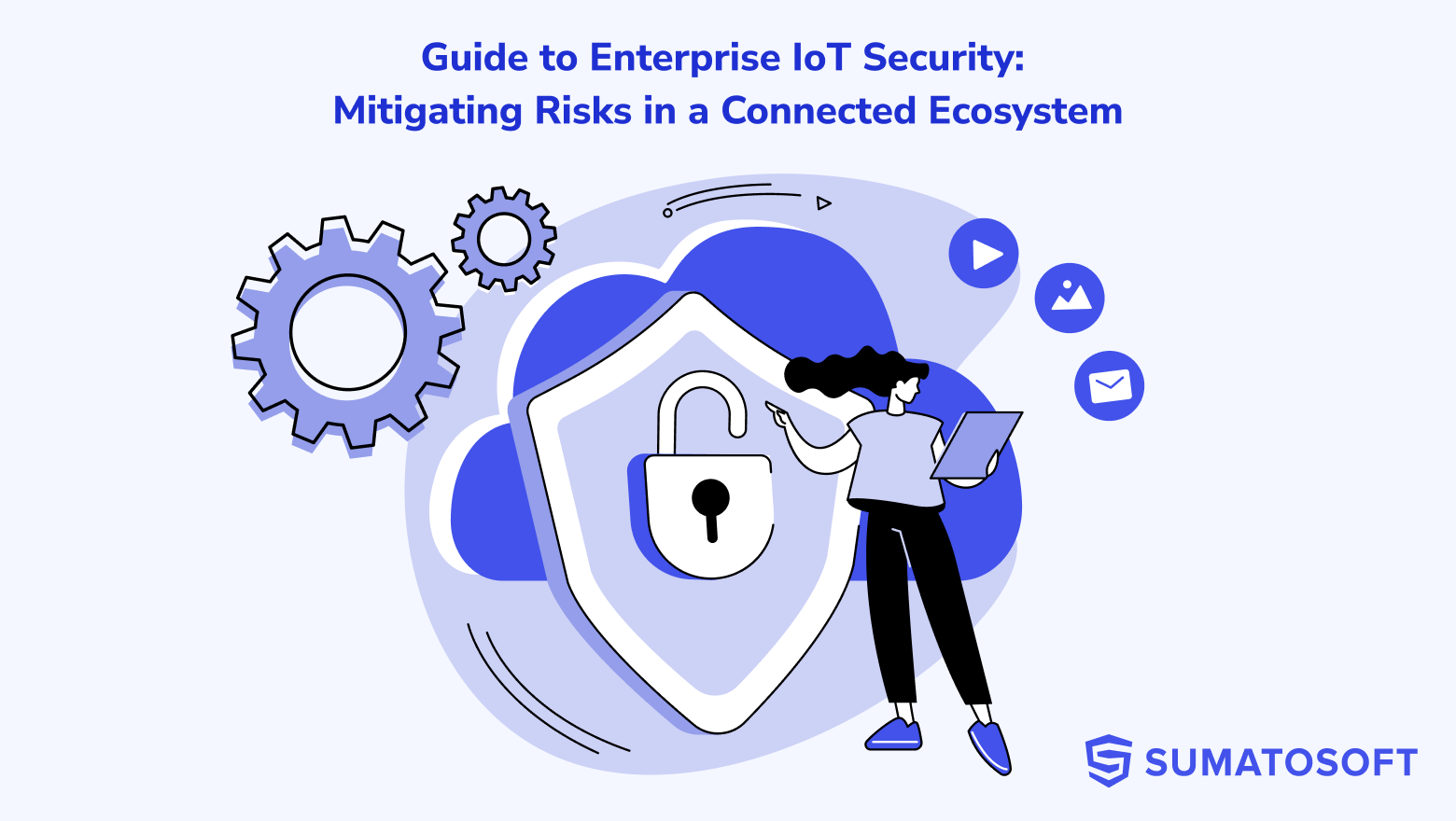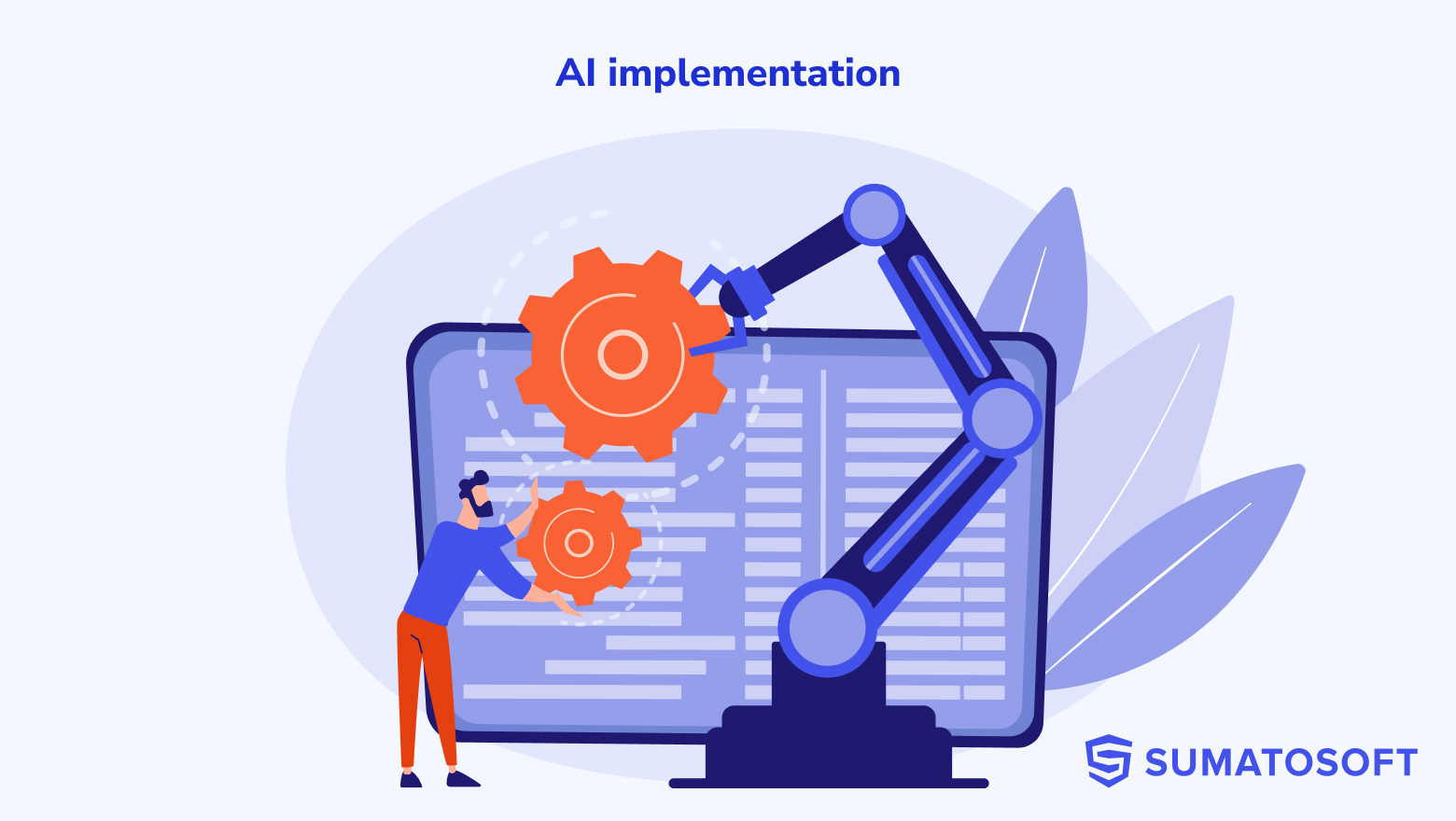Explained by SumatoSoft: What IoT (Internet of Things) is
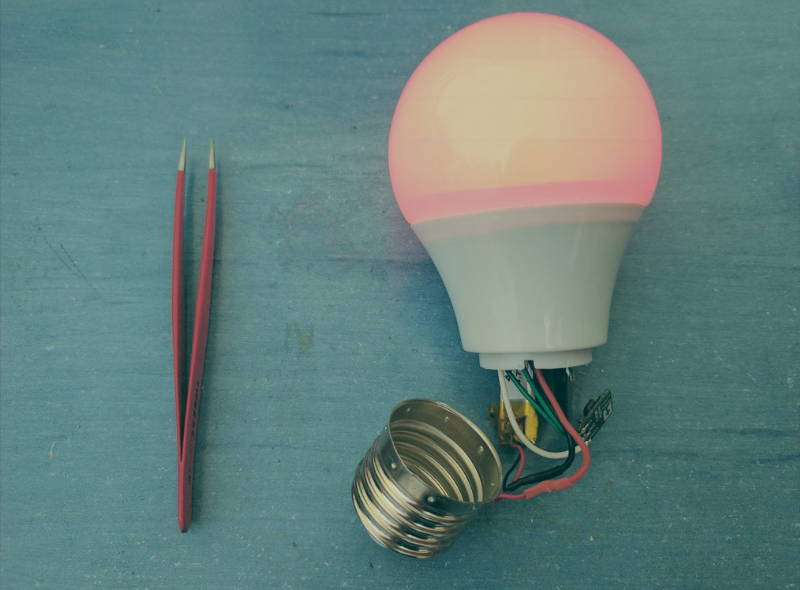
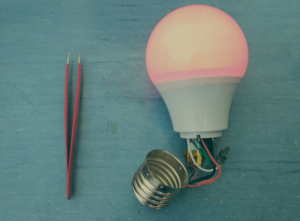
1. What is the Internet of Things?
1.1. What is IoT?
The Internet of Things (IoT) in general refers to everything connected to the Internet but today it is increasingly used to define all “smart” devices embedded with sensors, software, and other technologies (watches, fridges, cars, etc) that “talk” to each other.
Such devices create a network of physical objects (“things”) that are connecting and exchanging data with other devices and systems via the Internet. Thanks to the invention of super-cheap computer chips and wireless networks, it is possible to turn anything into the Internet of Things part.
Matthew Evans, the IoT program head at techUK, says.
The IoT brings together the digital world and the physical world, making the structure of the world around us smarter and more sensitive.
1.2. What is an example of an Internet of Things device?
The term Internet of Things (IoT) is mainly used for devices that are not expected to be connected to the Internet but have it. These include objects of all shapes and sizes, from smart microwave ovens (which can automatically cook food at the right time) to self-driving cars (its complex sensors can detect objects in their path).
Let’s clarify the question “What is IoT?” with examples: Smart toasters, connected thermometers, and cat collars are just a few of the everyday “things” connected to the Internet. Light bulbs that can be turned on and off using mobile apps are IoT devices, as well as motion sensors or thermostats, or connected lights in the office.
Therefore, although PCs are full of sensors, PCs are generally not considered IoT devices, and smartphones are not considered smartphones. However, smartwatches, fitness bands, or other wearable devices may be considered IoT devices.
1.3. How IoT works
The IoT architecture consists of smart “things” – devices that use embedded systems (processors, sensors, and hardware). These devices collect, send, and manage data and systems based on data acquired from the environment. IoT devices connect to IoT gateways, IoT platforms, or other devices for analysis and share the sensor data they collect.
The IoT platform is used to find patterns, work out recommendations and detect possible issues before they occur. Artificial intelligence (AI) and machine learning also help IoT developers make data collection and processing easier and more dynamic.
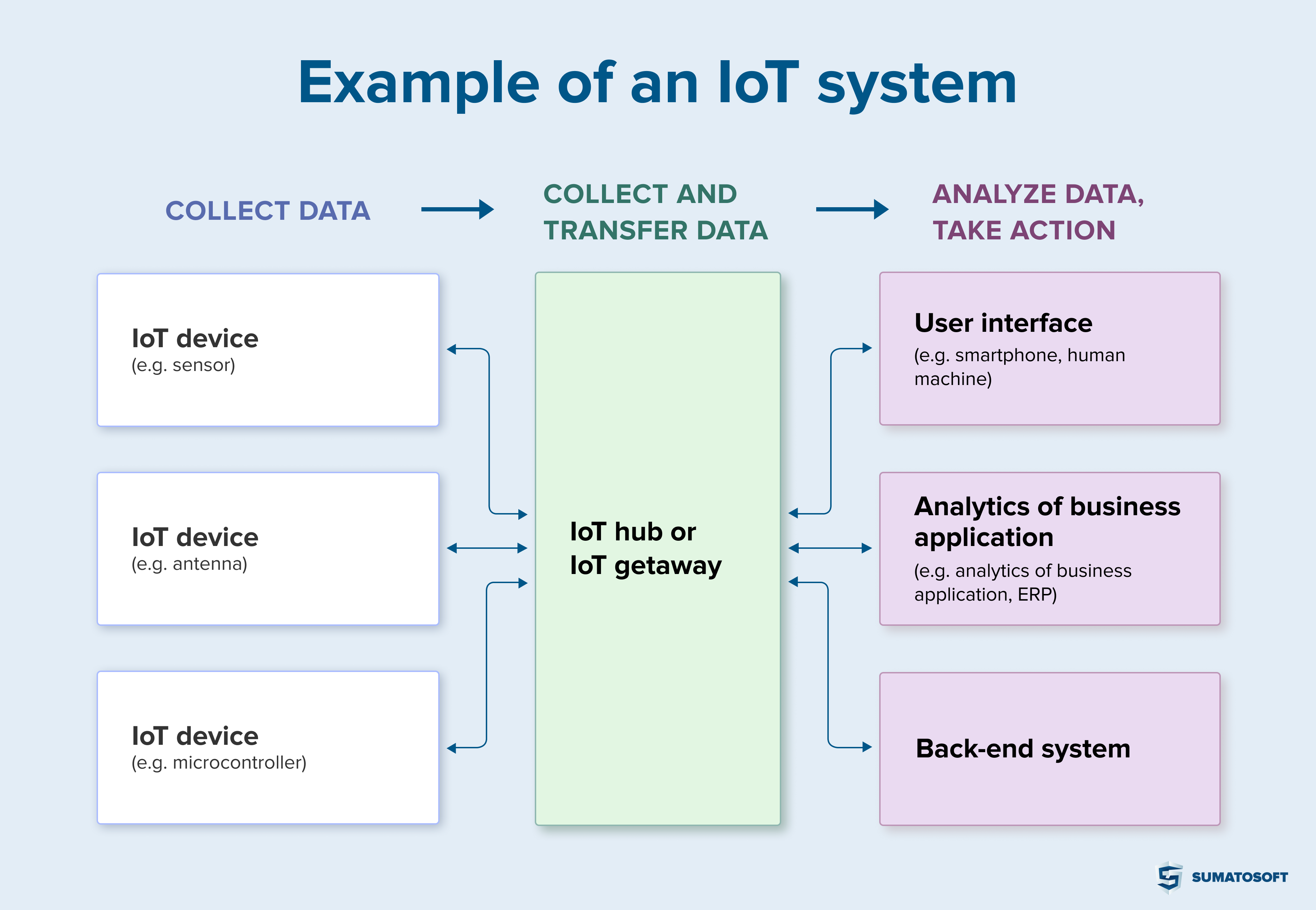
1.4. What is the history of the Internet of Things?
In the 1980s and 1990s, the idea of making “things smart” was actively researched and discussed.
In 1982 Carnegie Mellon University’s Coca-Cola vending machine became the first device connected to the Internet and able to report whether a new drink was cold.
In 1999 the term “Internet of Things” was proposed by Kevin Ashton of P&G. At the time, radio frequency identification tags (RFID tags, low-power chips that can communicate wirelessly) were essential for the IoT development, which would enable computers to manage all the individual Internet of Things.
The relatively slow IoT development progress is due to technical limitations. The chips were too large and expensive to enable objects to communicate effectively. For IoT to become widely spread, it needs inexpensive, power-efficient, and almost disposable processors.
However, the question “what is IoT?” still worried people, so IoT development has started to spread and evolve over the past few years. Among other things, the adoption of IPv6 also provided enough IP addresses for every device, which is also a necessary step for IoT expansion.
What technologies have made IoT possible?
The idea of the Internet of Things has been around for a long time, but only the latest IT developments have made it practical.
- Low-cost and low-power sensor technology made IoT technology available to more manufacturers.
- Connectivity for efficient data transmission. The development of a range of network protocols of the Internet made it easy to connect sensors to the cloud and other “things”.
- Cloud computing platforms. Cloud platforms create infrastructure IoT development company needs to manage the data received.
- Machine learning and analysis. The advancement of machine learning and analysis technology and access to various massive amounts of data stored in the cloud, allow IoT development companies to gather insights faster and easier.
- Conversational artificial intelligence (AI). Natural language processing (NLP) to IoT devices and made them attractive and affordable.
- People have finally found the answer to the question “What is IoT?”!
1.5. How big is the Internet of Things?
Different research institutions and organizations all over the world have conducted in-depth research to accurately measure the IoT market. The results are a bit different, but they all have one thing in common – the numbers prove the growing trend and market. The collection of statistics on the IoT development market can provide a good understanding of the degree of activity in the industry.
- US$381 billion-estimated global IoT revenue in 2020 adjusted for the impact of the pandemic. (GSMA Intelligence, December 2020)
- This is 9% lower than the initial estimate before the pandemic. (GSMA Intelligence, December 2020)
- US$906 billion-Estimated global IoT revenue in 2025 adjusted for the impact of the pandemic. (GSMA Intelligence, December 2020)
- US$200 billion-By 2025, global IoT revenue will be destroyed by the pandemic. (GSMA Intelligence, December 2020)
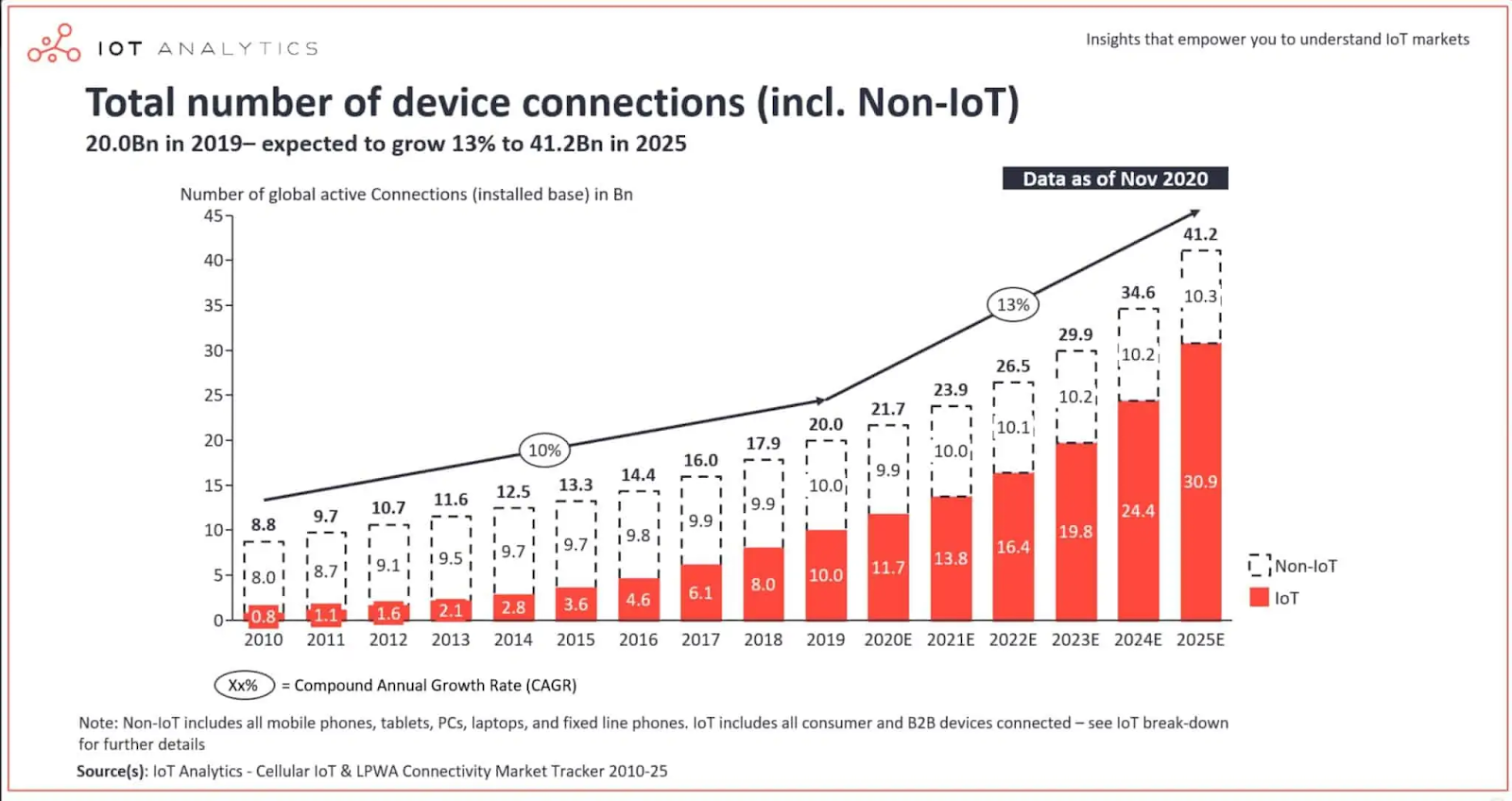
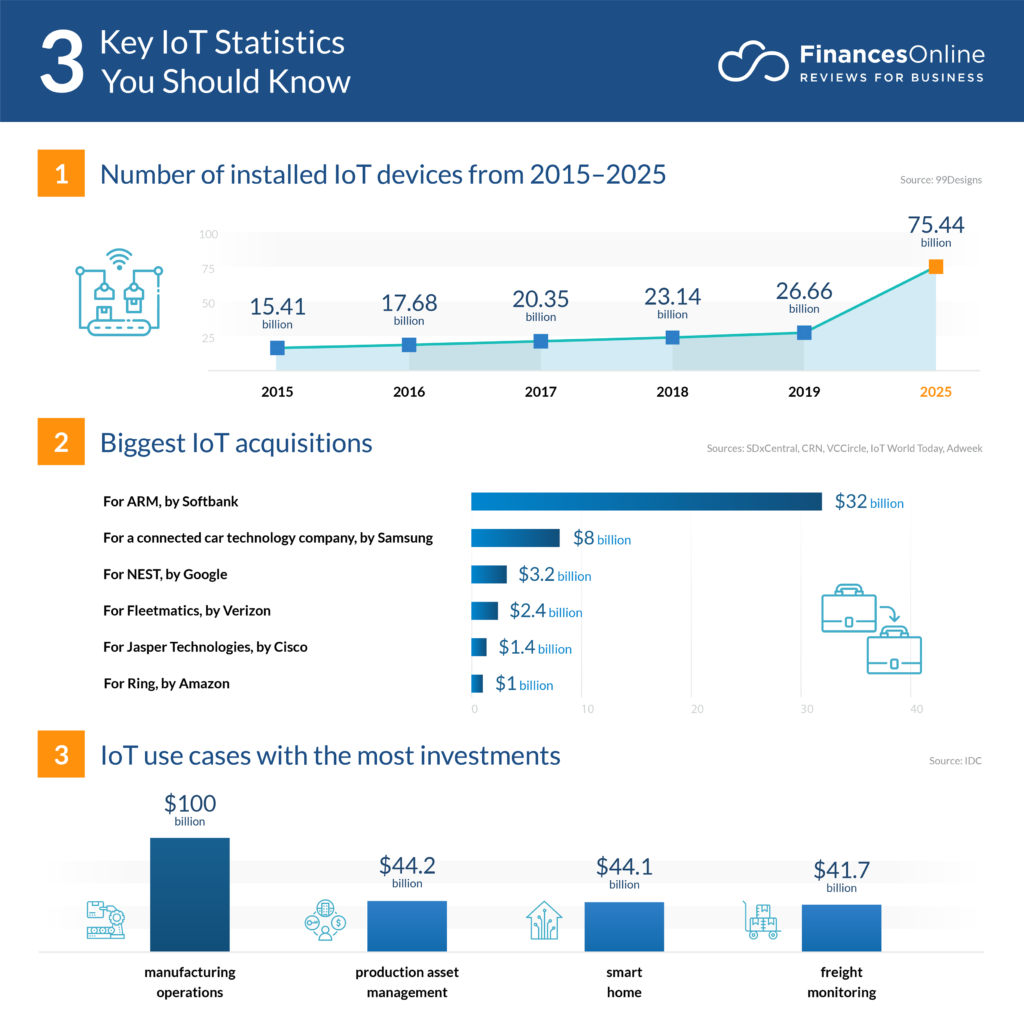
1.6. What are the benefits of the Internet of Things?
Initially, the Internet of Things was the most interesting thing in business and manufacturing. In this field, its application is sometimes called machine-to-machine (M2M), but now the focus is to fill our homes and offices with smart devices, turning them into connections with almost all “related” things.
Organizations in more and more industries are using IoT to improve operational efficiency, better understand customers to provide enhanced customer service, improve decision-making and increase business value. IoT can help companies in creating new value streams for customers, speed time to market, and respond more rapidly to customer needs.
What is the Industrial Internet of Things?
The Industrial Internet of Things (IIoT) or Industry 4.0 is the name for using IoT technology in business. The goal is to use a combination of sensors, wireless networks, artificial intelligence, and data analysis tools to track and optimize business processes.
Manufacturers add sensors to their products to transmit data about their performance. Companies also use the data generated by these sensors to improve systems efficiency and supply chains.
10 types of IoT enterprise deployments:
- Datacenter monitoring, management, and automation.
- Supply chain and inventory management.
- Fleet management, telematics.
- Mobile device management.
- Contextual product features.
- Asset management.
- Building or facility management.
- Surveillance and security monitoring.
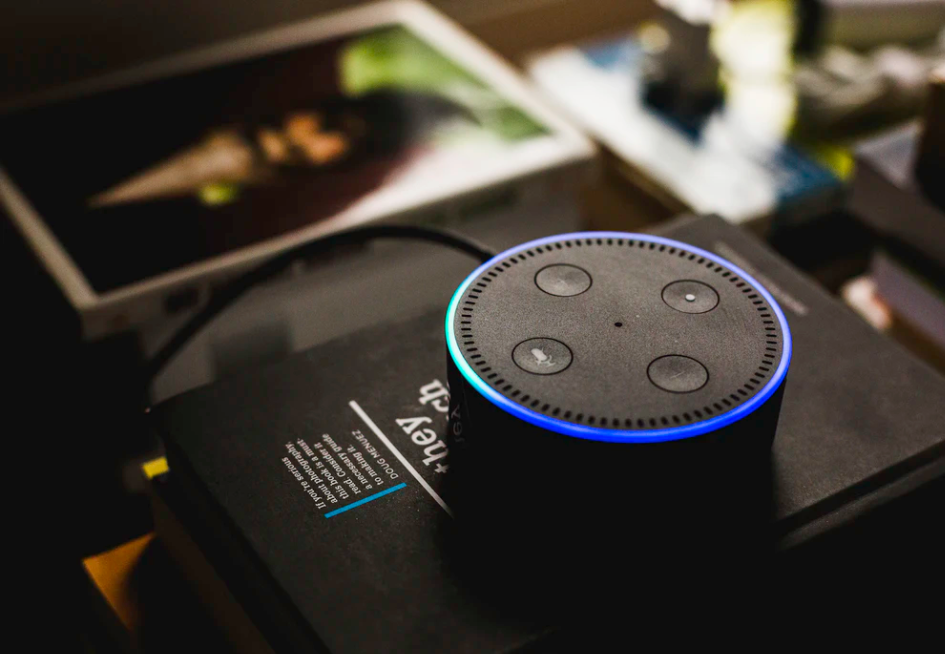
Top IoT benefits for business
The exact benefits of the IoT to a business depend on the specific implementation. Mostly agility and efficiency are on the list of the top benefits.
says consultants McKinsey.
What are the benefits of the Internet of Things for consumers?
Smart homes may be the best example of IoT technologies for consumers. This is an area where large technology companies (Amazon, Google, and Apple) are in fierce competition.
Smart speakers like Amazon’s Echo and Google Home make it easier to play music, set a timer, or get information. From outside the home, sensors can help us understand how noisy or polluted the environment may be. Self-driving cars and smart cities may change the way we build and manage public places.
2. IoT Development Tools
2.1. Types of IoT Wireless Technologies
Each IoT wireless solution has its advantages and disadvantages in various network standards, so it is most suitable for different IoT use cases. Choosing the best wireless technology for your IoT use case requires an accurate assessment of bandwidth, QoS, security, power consumption, and network management.
The best IoT wireless technologies:
- LPWANs.
- Cellular (3G/4G/5G).
- Zigbee and Other Mesh Protocols.
- Bluetooth and BLE.
- Wi-Fi.
- RFID.
1. LPWANs
Low Power Wide Area Networks (LPWAN) use small, inexpensive batteries to provide long-distance communications. It connects all types of IoT sensors-facilitating numerous applications from asset tracking, environmental monitoring, and facility management to occupancy detection and consumable monitoring.
Nevertheless, LPWAN can only send small blocks of data at a low rate, so it is more suitable for use cases that do not require high bandwidth and are insensitive to time.
2. Cellular (3G/4G/5G)
Cellular networks provide reliable broadband communications and support various voice calls and video streaming applications. On the downside, they impose high operating costs and power requirements.
Cellular networks are well-suited for specific use cases, such as connected cars or fleet management in transportation and logistics.
3. Zigbee and Other Mesh Protocols
Zigbee is a short-range, low-power wireless standard (IEEE 802.15.4), which is usually deployed in a mesh topology to extend coverage by relaying sensor data across multiple sensor nodes. Compared with LPWAN, Zigbee can provide a higher data rate, but at the same time, the power efficiency due to the mesh configuration is much lower.
Due to their short physical distance (<100m), Zigbee and similar mesh protocols (such as Z-Wave, Thread, etc.) are most suitable for medium-distance IoT applications where the node distance is evenly distributed.
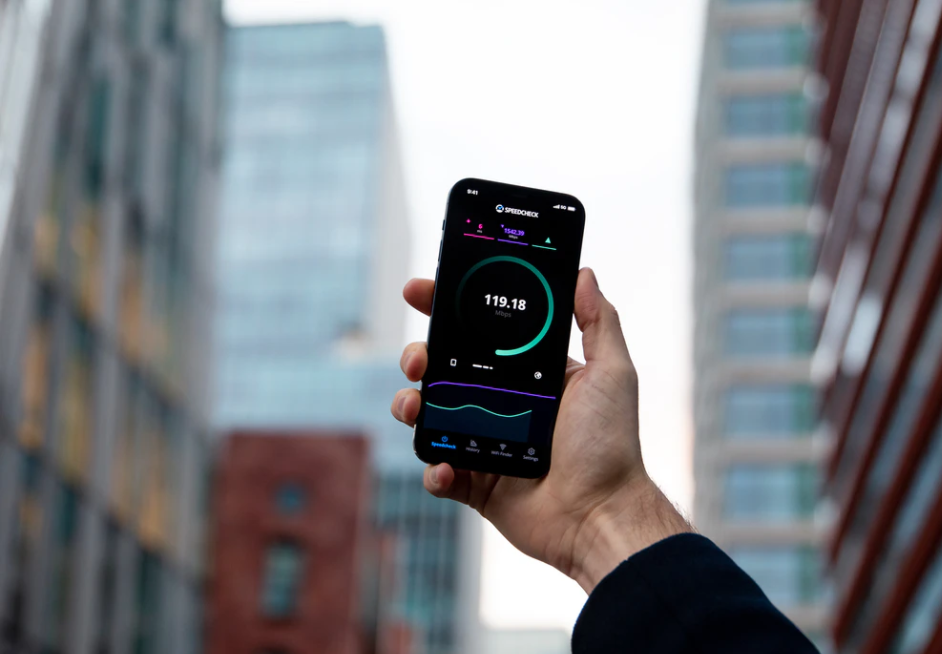
4. Bluetooth and BLE
Bluetooth is defined in the category of wireless personal area networks and is a short-range communication technology well positioned in the consumer market. Bluetooth Classic was originally designed for point-to-point or point-to-multipoint (up to seven slave nodes) data exchange between consumer devices. Optimized for power consumption, and later introduced Bluetooth low energy technology to solve small consumer IoT applications.
Today, BLE has been widely integrated into fitness and medical wearable devices (such as smartwatches, blood glucose meters, pulse oximeters, etc.) and smart home devices (such as door locks), so that data can be easily transmitted to smartphones.
5. Wi-Fi
Because of the key role of Wi-Fi in providing high-throughput data transmission for enterprise and home environments, no explanation is needed. However, in the field of the IoT, its main limitations in coverage, scalability, and power consumption have greatly reduced the popularity of this technology.
Due to the high energy requirements, Wi-Fi is usually not a viable solution for large networks of battery-powered IoT sensors. It involves more connected devices that can be easily connected to power outlets, such as smart home gadgets and devices, digital signage, or security cameras.
6. RFID
Radiofrequency identification (RFID) uses radio waves to transmit small amounts of data from an RFID tag to a reader over a short distance. So far, this technology has promoted a major revolution in the retail and logistics fields.
By attaching RFID tags to various products and equipment, companies can track their inventory and assets in real-time, thereby achieving better inventory and production planning and optimized supply chain management.
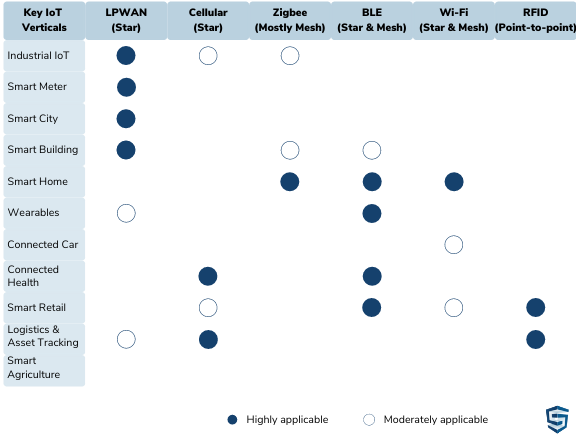
2.2. IoT Standards
At the center of creating a vast, reliable IoT network lies one significant issue: compatible standards. Connected objects need to be able to speak to each other to transfer data and share what they are recording. If they all run on different standards, they struggle to communicate and share. The Institute of Electrical and Electronics Standards Association lists a huge number of standards being developed and worked on for different applications.
the Internet Society says. If standardization happens it will let more devices and applications be connected
To try and tackle this issue on an enterprise-scale, Microsoft has introduced its system for IoT devices. Called IoT Central, TechCrunch reports the system gives businesses a managed central platform for setting up IoT devices. Microsoft claims the system will simplify the creation of IoT networks.
2.3. IoT Application Development
IoT application development is also called M2M application development (machine-to-machine) and means the development of applications for data exchange among IoT devices and other systems without human interaction.
7 Basic Components of IoT Application Development
Depending on the approaches, IoT software development companies define from 4 to 7 the most common components of an IoT ecosystem.
- Connected devices “things”.
- Central Control Hardware
- Data Cloud.
- User interface.
- Network Interconnection.
- System Security.
- Data Analytics.
What do IoT developers do?
IoT work is carried out by 3 types of professionals:
- network specialists manage connectivity.
- data analysts gather data from the devices and interpret it.
- IoT engineers create the platforms, software, hardware, and systems that allow these devices to function.
What skills are needed for IoT?
- Machine learning and Artificial Intelligence.
- JavaScript and Python.
- Knowledge about how sensors work.
- UI-centric Approach.
- Node.
- Big Data.
- Security.
- GPS systems.
Which tools are used for IoT app development?
IoT companies use some development tools including the following ones.
3. What about the Internet of Things security?
3.1. What about the Internet of Things and privacy?
Since all IoT sensors are collecting data on everything you do, IoT can be a huge privacy and security problem. Consumers and businesses need to understand this IT data collection and communication and whether they are satisfied with it. IoT data can be combined with other data to create surprisingly detailed pictures.
Incorrectly installed IoT products may easily open a company or private network to be attacked by hackers, or simply leak data.
IoT development companies understand this problem and work hard to improve IoT security to ensure that there is no data leakage. This is one of the priorities in the development of the IoT in the next few years.
3.2. Internet of Things and big data analytics
IoT generates a lot of data: from sensors connected to machine parts or environmental sensors, or words we yell at smart speakers. This means that the IoT is an important driving force for big data analysis projects because it allows companies to create and analyze large data sets.
As IDC analysts pointed out, the IoT metadata category is a growing data source to be managed and utilized.
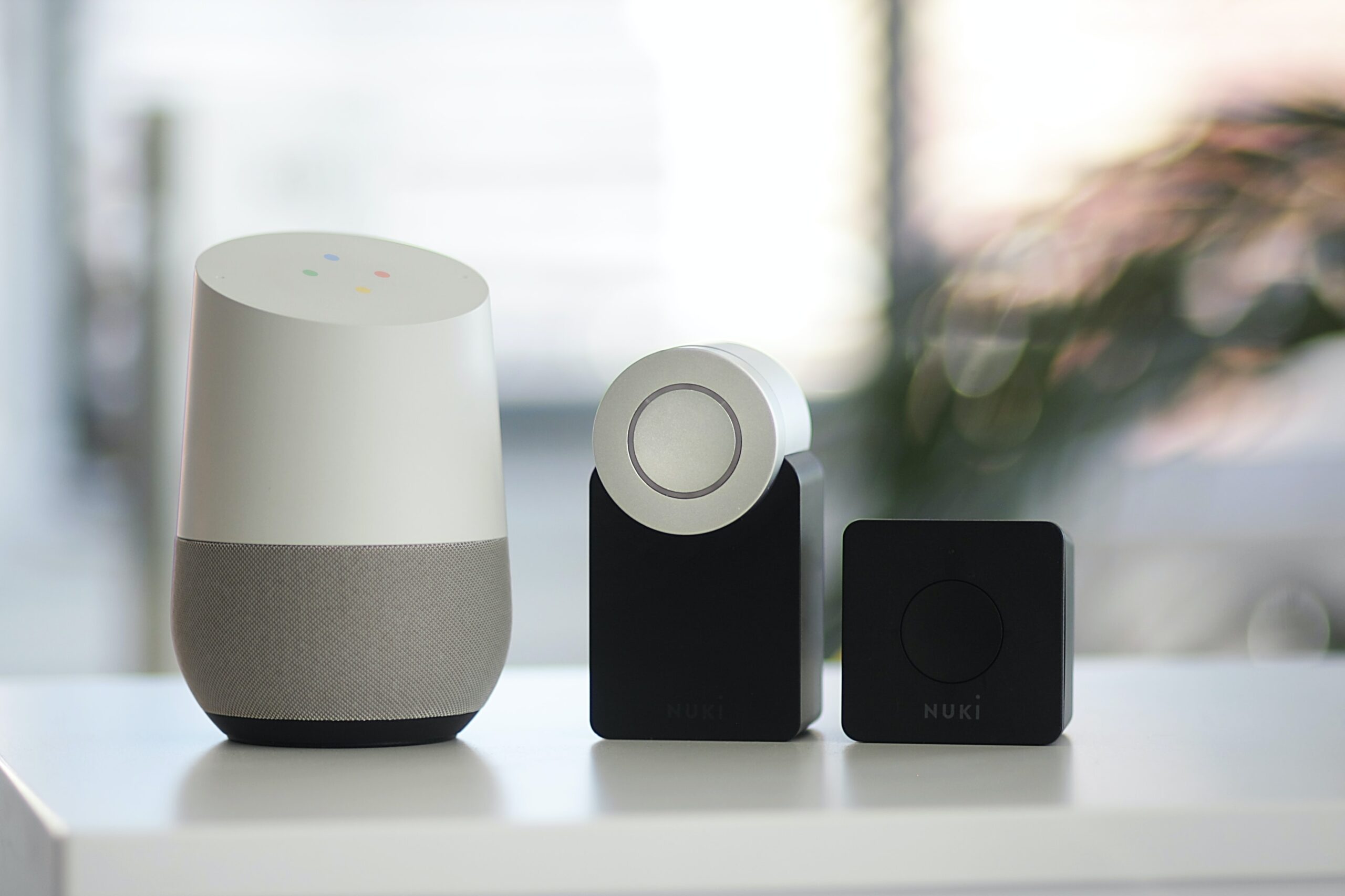
3.3. Internet of Things and the cloud
The large amount of data generated by IoT applications means that many companies will choose to process data in the cloud instead of building large amounts of internal capacity. Cloud computing giants are already attracting these companies: Microsoft has its Azure IoT Suite, and Amazon Web Services and Google Cloud both provide a range of IoT services.
3.4. IoT data and artificial intelligence
IoT devices generate large amounts of data. All these IoT data must be collected, stored, and analyzed. One way for companies to make the most of this data is to feed it into artificial intelligence (AI) system that will take this IoT data and use it to make predictions.
For example, Google has made AI responsible for its data center cooling system. AI uses data extracted from thousands of IoT sensors, which are fed into deep neural networks, and predicts how different choices will affect future energy consumption. Through the use of machine learning and artificial intelligence, Google has been able to increase the efficiency of its data centers and said the same technology can be used in other industrial environments.
4. IoT evolution – Where does the IoT go next?
As the price of sensors and communications continues to drop, it becomes cost-effective to add more devices to the IoT – even if in some cases there’s not much obvious benefit to consumers. Deployments are at an early stage; most companies that are engaging with the IoT are at the trial stage right now, largely because the necessary technology – 5G or machine-learning powered analytics – is also still at an early stage of development. There are many competing platforms and standards and many different vendors, from device makers to software companies to network operators.
As the number of connected devices continues to rise, our living and working environments will become filled with smart products – assuming we are willing to accept the security and privacy trade-offs.
Brian Solis, from Altimeter Group said
Let’s start
If you have any questions, email us info@sumatosoft.com

